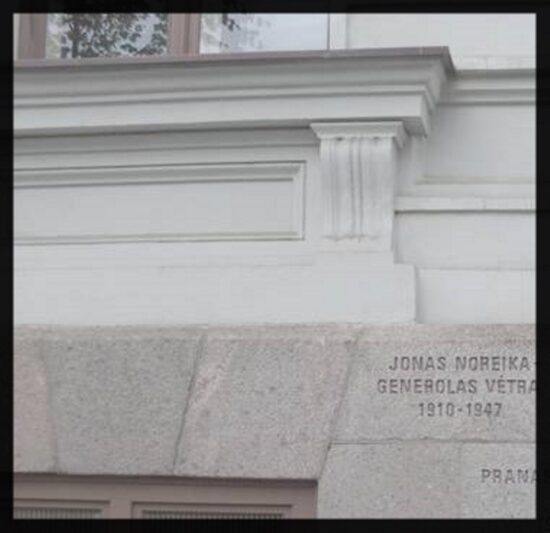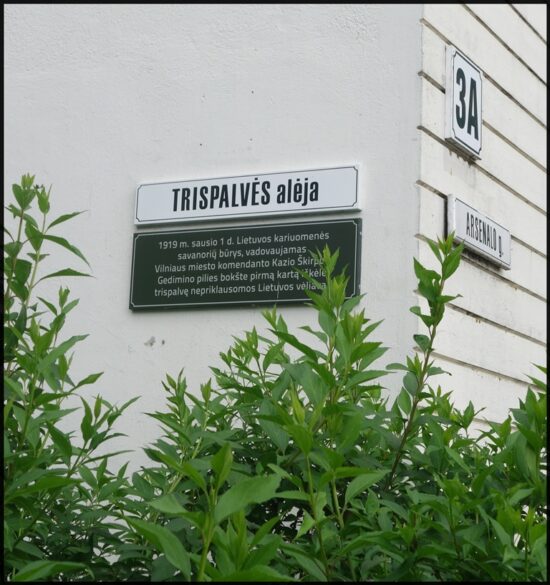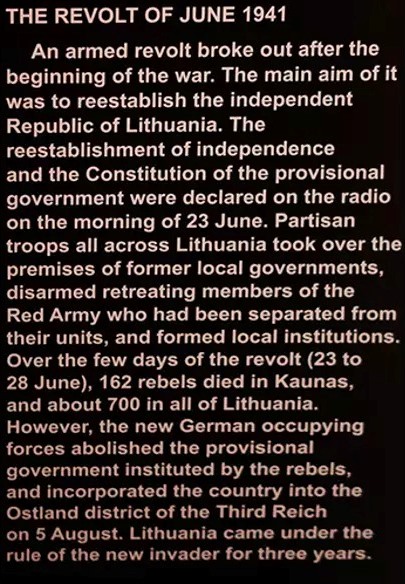[LATEST UPDATE. PAGE PUBLISHED ON 1 JAN. 2023]
◊
VILNIUS—The Defending History community celebrates the 700th birthday of Vílna (today’s beautiful Vilnius — capital of the democratic EU state Lithuania; in Yiddish — Vílne; Polish Wilno; Belarusian Vilna; German Wilna) in the spirit of love for a city whose hundreds of years of harmony brought such magnificent cultural achievements in an array of cultures and languages. One of them is its Jewish legacy. Briefest of examples: Thousands of books in Hebrew, Aramaic and Yiddish were published in the nineteenth century alone. The Gaon of Vilna and the founders of modern Yiddish scholarship walked these streets.
The universally revered founder of Vilnius, Grand Duke Gediminas (Gedymin) built his new capital in 1323 as a harmonious symphony of humanistic diversity, a legacy that pulsates even today on the city’s charming streets. He is surely looking down on his city aghast at these “monuments” (in effect) to Aryanist ethnic purity, via the glorification of “nationalist heroes” who joined the Holocaust to kill as many Jewish citizens as possible. The Gediminist spirit will emerge triumphant, wait and see…
“People who love the city actually care about this stuff”
QUESTION: Will the city’s (and country’s) leaders at long last remove the public-space state-financed memorials that glorify participants in and collaborators of the Holocaust in which 96.4% of Lithuanian Jewry perished? Here are some of the most obvious candidates for rapid removal. Hopefully before the year’s tourist season gets underway this spring…
Lev Golinkin’s survey of monuments to Nazi figures in Lithuania
Kaunas and its own collection
◊
The shiny new plaque with bas-relief on facade of Library of Sciences was erected in 2019 after the dispute over the earlier one (that had been smashed, reconstructed and taken down). This is on a prestigious public building some three minutes walk from Vilnius Cathedral and Gedimino Boulevard. It glorifies the brutal Jonas Noreika, subject of his granddaughter Silvia Foti’s major recent book in the USA. In addition, Noreika-worship was this month a focus of a gallant peaceful demonstration by the students of Rambam Mesivta on 15 March outside the Lithuanian Consulate in New York City, led by the academy’s dean, and long-time campaigner for historic justice, Rabbi Zev Meir Friedman. The travesty of Noreika worship was brought to the attention of the English speaking world in Defending History in 2012 by Evaldas Balčiūnas, who is this year’s DH Person of the Year. This year, the Noreika travesty has become much more widely known thanks to Michael Kretschmer’s film J’Accuse!. And, in 2023, this shameful Noreika shrine was removed before last July’s NATO conference on the official grounds of “repairs” (!) with promises that it would be restored in short order. Watch this space.
“Gediminas is turning over in his grave”
◊
Marble slab high above Gedimino, some three minutes from the nation’s parliament glorifying J. Noreika:
“Gediminas turns over in his grave yet again”
◊
One of over a dozen street signs celebrating the 23rd of June 1941, when the Lithuanian Holocaust broke out, as LAF (“Lithuanian Activist Front”) supporters of Adolf Hitler murdered thousands of fellow citizens because they were Jewish. In over forty locations the slaughters came before the arrival of the first German forces. Of around a thousand Lithuanian Holocaust survivors interviewed over three decades, there is near universal agreement on one point: the Lithuanian Holocaust was initiated on 23 June 1941, when hundreds of years of happy tolerance morphed into overnight dehumanization and the onset of slaughter.
Enterprising journalists might ask people who live on this Vilnius street: Hey, buddy, do you happen to know what the date in your street name celebrates?
◊
After years of struggle by Defending History and some of its leading authors, the name of a street for Holocaust cheerleader and inspirer Kazys Škirpa was finally changed. But a brand new plaque glorifying Škirpa was installed under the new name. It is affixed to the outside of the Museum of Applied Arts and Design, a short walk from the Cathedral and Gedimino Boulevard. For Škirpa’s legacy, see Dr. Andrius Kulikauskas’s now classic study.
Škirpa with Hitler in Berlin in 1941:
◊
In front of the Ministry of Defense, a stone’s throw from the presidential palace, there towers a statue of Jonas Žemaitis, a figure deeply involved with Hitlerist activity and Holocaust collaboration.

Far from the roster of Hitlerists’ monuments marring the beautiful capital of Lithuania decreasing, another, naming of a square, was added in 2021, to glorify Juozas Lukša, as part of a year dedicated to his honor.
◊
Much worse, in a sense, than street and square names, plaques, and bas-reliefs is the dissemination of horrifically Fake History in the most popular (?) museum of a beautiful EU capital: the phoney-maroney ultranationalist that the LAF did not in fact slaughter thousands of Jews before the Nazis arrived, that they were really brave national heroes who drove out the Soviet Army in a “great uprising.” But how can the Genocide Museum think that educated Europeans and visitors from further afield do not know that the Soviet army was fleeing Hitler’s attack on the USSR — Operation Barbarossa — the largest invasion in human history. Sorry, mate, they were not fleeing the white-armbanded Jew-shooters. The late historian Yitzhak Arad, a former director of Yad Vashem, estimates that around 10,000 Jewish citizens were murdered on “local initiative” before German authority was established fully. The late historian Prof. Dov Levin documented forty locations where murders are documented before the first German soldier entered. All the world’s nations have their dark spots. But it is painful for an EU democracy to cover it with a “fake history” in its most popular museum. An “uprising” or “revolt” can only transpire against a government in power. When the Soviets were in power, the LAF did not shoot a local rabbit. When Soviet forces fled the German invasion, the LAF and its fellow murderers set about massacre of their own citizens of a certain ethnicity.
◊
◊







